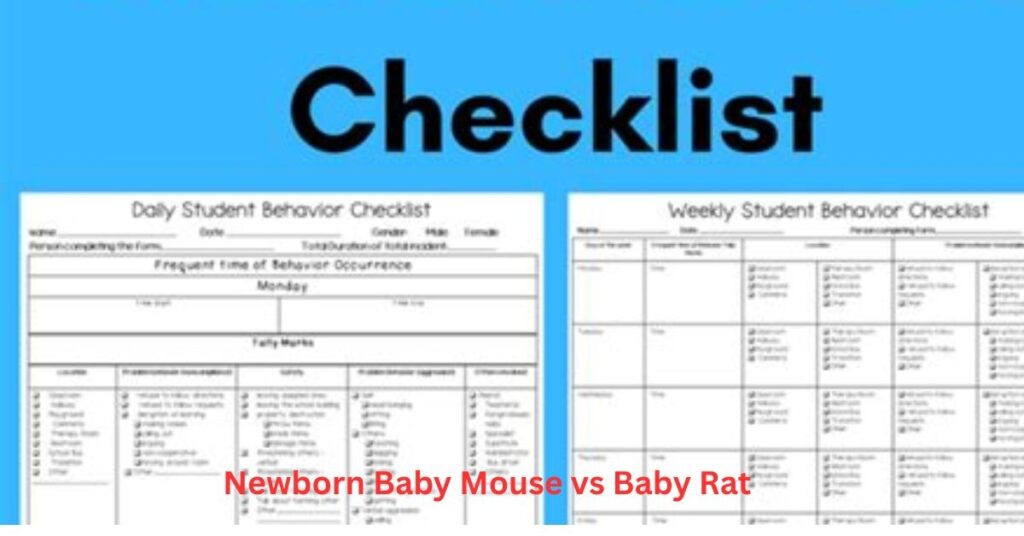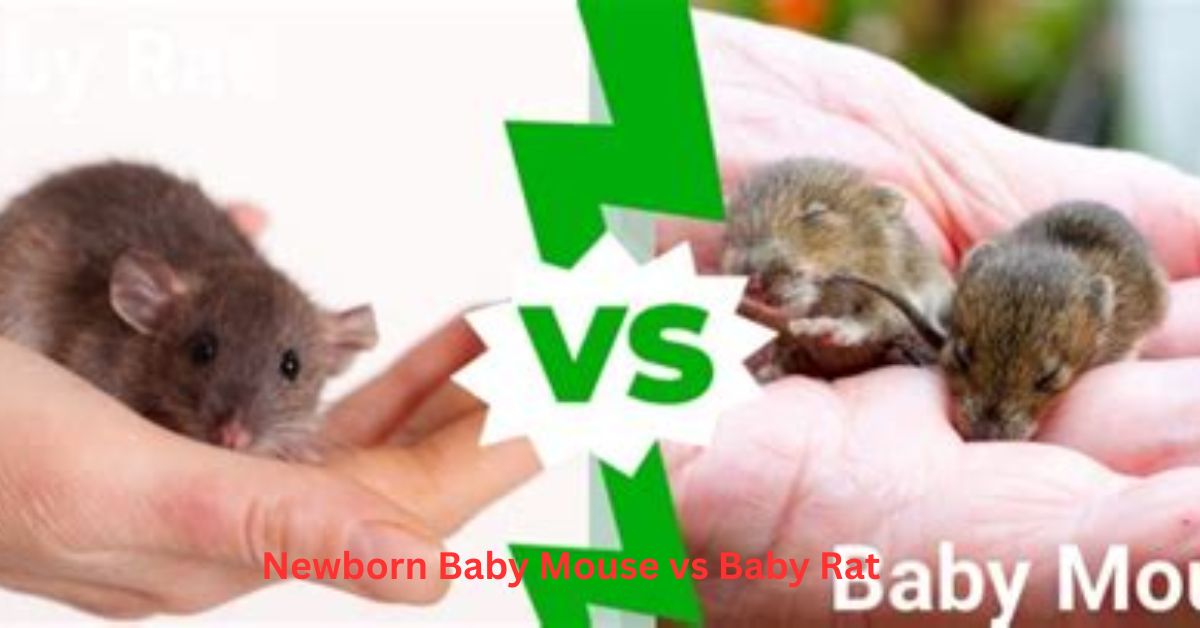Newborn Baby Mouse vs Baby Rat — have you ever seen a tiny pink creature move across the floor and wondered which one it was? Most people can’t tell the difference at first glance. Both are small, hairless, and helpless when born, which makes them look almost identical. However, once you know what to look for, identifying them becomes simple and accurate.
In this 2025 guide, you’ll learn the key physical and behavioral differences between a newborn baby mouse and a baby rat, so you can understand what’s really hiding in your home and take the right steps to control it.
Introduction to Baby Mice and Rats
Newborn mice and rats are born blind, deaf, and without fur. They depend completely on their mother for warmth and feeding. Within about three weeks, their fur grows in, and their eyes begin to open.
Baby mice are usually smaller and more active once they begin exploring, while baby rats tend to stay close to their nest until they feel safe. These small behavioral differences become more noticeable as they grow.
Understanding the difference between these two rodents helps you take the right action when dealing with a pest problem.
Physical Appearance of Baby Mice vs Baby Rats
Identifying by Size
Size is one of the easiest ways to tell the two apart. A newborn baby mouse is about one to two inches long, while a baby rat measures two to four inches.
As they grow, baby rats develop thicker bodies and heavier heads, while baby mice remain slim and lightweight. Even at an early age, a baby rat’s tail is longer and more noticeable than a baby mouse’s.
Identifying by Fur Color
Fur color and texture provide another clue.
- Baby mice usually have light gray or brown fur with soft, smooth texture and pale bellies.
- Baby rats tend to have darker brown or black fur that feels rougher. Their feet are often lighter than the rest of their body.
By comparing them side by side, the differences in color and texture become quite clear.
Identifying by Ears and Tail Length
Ears and tails are reliable indicators as well.
- Baby mice have smaller, rounded ears and thin, short tails that measure less than two inches.
- Baby rats have larger, more prominent ears and longer, thicker tails that can reach four inches or more.
The tail length, in particular, is one of the most obvious visual differences between the two species.
Identifying by Behavior

Behavior often gives away what type of rodent you’re observing.
- Baby mice are curious, quick, and vocal. They explore their surroundings early and often make small squeaking noises.
- Baby rats are more cautious and quiet. They prefer to stay hidden and move carefully when they do venture out.
If you notice small, quick movements and faint chirping sounds, you’re likely dealing with baby mice. If the rodents are quiet and stay out of sight, they are probably baby rats.related more articlehttps://wellness360plus.info/
Why Identification Matters
Accurate identification is essential for effective pest control. Mice and rats may look similar, but they behave differently and respond to different control methods. Using the wrong approach can waste time and money, and may even make the problem worse.
By learning the distinctions between a newborn baby mouse vs baby rat, homeowners can respond quickly and choose the most effective treatment or professional service.
Rodent Control Tips for 2025
Once you know which rodent you’re dealing with, follow these basic steps to prevent further problems:
- Seal all small cracks and holes in walls, doors, and windows.
- Keep all food in airtight containers.
- Clean up crumbs, spills, and pet food right away.
- Avoid leaving garbage or clutter near entry points.
- Use natural deterrents like peppermint oil or ultrasonic repellents.
If you suspect a larger infestation, contact a certified pest control service. Professionals can inspect your home, identify the rodent species, and safely remove them.
Professional Help: Banner Pest Services
Companies such as Banner Pest Services specialize in identifying and eliminating rodent problems quickly. With the right tools, experience, and knowledge, they can determine whether you have mice or rats and apply targeted control solutions.
Their approach focuses on safety, efficiency, and long-term prevention—so your home stays pest-free without unnecessary chemicals or guesswork.
FAQs: Newborn Baby Mouse vs Baby Rat
1. How can I tell a newborn baby mouse from a baby rat?
Baby mice are smaller, with thinner tails and smaller heads. Baby rats are larger and have thicker tails and broader faces.
2. What does a newborn baby mouse look like?
Tiny, pink, hairless, and about an inch long. Their eyes are shut, and they rely completely on their mother.
3. Are baby rats more harmful than baby mice?
Both can cause damage, but rats grow faster and can chew through tougher materials.
4. How fast do baby mice and rats grow?
Within 3–4 weeks, both are fully furred and mobile. By 6 weeks, they can reproduce.
5. Can I handle baby mice or rats safely?
Avoid touching them directly. Use gloves if necessary, and always wash your hands afterward.
Conclusion
Spotting the difference between a newborn baby mouse vs baby rat doesn’t have to be confusing.
Just look for the small signs — size, fur texture, tail length, and behavior. Once you can tell them apart, you’ll be better prepared to keep your home clean, safe, and pest-free.
Stay observant, act early, and let your newfound rodent knowledge save you time and stress in 2025!

